Can You Replace Steering Wheel
This post contains affiliate links. As an Amazon Associate, we earn from qualifying purchases.
Replacing a steering wheel is absolutely possible with the right tools and guidance. You can successfully swap out your old steering wheel by following a few key steps, starting with disconnecting the battery for safety. Further details and additional tips for a smooth and secure replacement process will be covered later in the article.
Essential Facts in 30 Seconds
- A steering wheel can be replaced if it is compatible with your car’s make and model.
- Disconnect the battery to prevent airbag deployment during the process.
- Use appropriate tools, such as a torque wrench, for a secure installation.
- Ensure proper alignment and clockspring positioning to avoid wiring problems.
- Test the steering, horn, and airbag light after installation to confirm safety.
Understanding Steering Wheel Replacement Basics
Get ready to replace a steering wheel with some basic know-how. First, understand its parts clearly. A steering wheel has a rim, spokes, and a hub. Often, an airbag sits in the center. This airbag keeps you safe but complicates things. It connects to electrical systems, so be careful.
Many modern wheels have extra features too. Think cruise control or heated grips. Wires inside control these cool extras. Know the layout to avoid breaking anything. Make sure the new wheel fits your car’s column. Check the shaft for a perfect match. Compatibility with your car model is essential for proper functionality car model compatibility. Always follow safety precautions to ensure a secure replacement process with airbag system safety. Regular maintenance of the steering system can prevent issues like lock-up due to mechanical binding issues.
Always handle the airbag with extra caution. Messing up can cause big safety risks. Stay alert to dodge electrical problems. Remember to disconnect the battery before starting to prevent accidental deployment.
Master these basics for a smooth swap. You’ll avoid headaches and stay safe. Let’s make this replacement easy and quick!
Essential Pre-Installation Steps
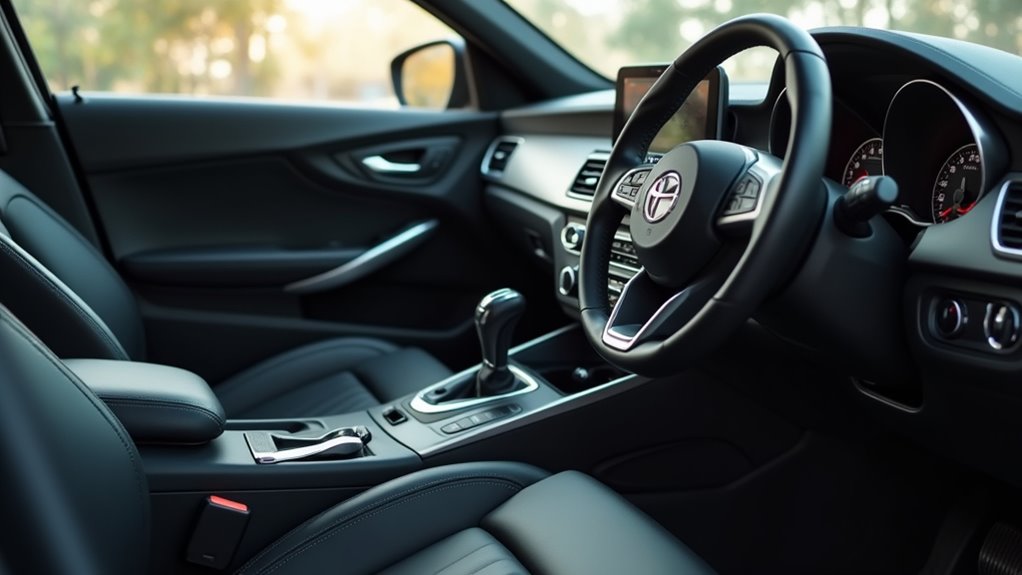
Let’s dive into the must-do steps before replacing your steering wheel. Safety comes first, especially with electrical parts. Disconnect the battery to stay safe from shocks. Always take off the negative terminal first. Wait five minutes to turn off airbag systems. This keeps airbags from popping out by mistake.
Make sure your new wheel fits your car’s steering column. Grab important tools like a torque wrench for the job. Remember to follow the manufacturer’s instructions to ensure a proper fit and safe installation manufacturer’s instructions. Secure the vehicle on a flat surface to prevent any movement during the process, just like when working on wheel studs flat surface stability. Ensure the steering wheel is centered before starting to maintain proper alignment during installation steering wheel alignment. A centered steering wheel also helps in avoiding misalignment issues during driving avoiding misalignment issues.
Picture these easy prep steps for a smooth start:
- Tie battery cables far from terminals to stop any contact.
- Keep front wheels straight to hold the right alignment.
- Place tools close by so you can grab them fast.
Follow these, and you’re all set to move ahead safely!
Removing the Existing Steering Wheel
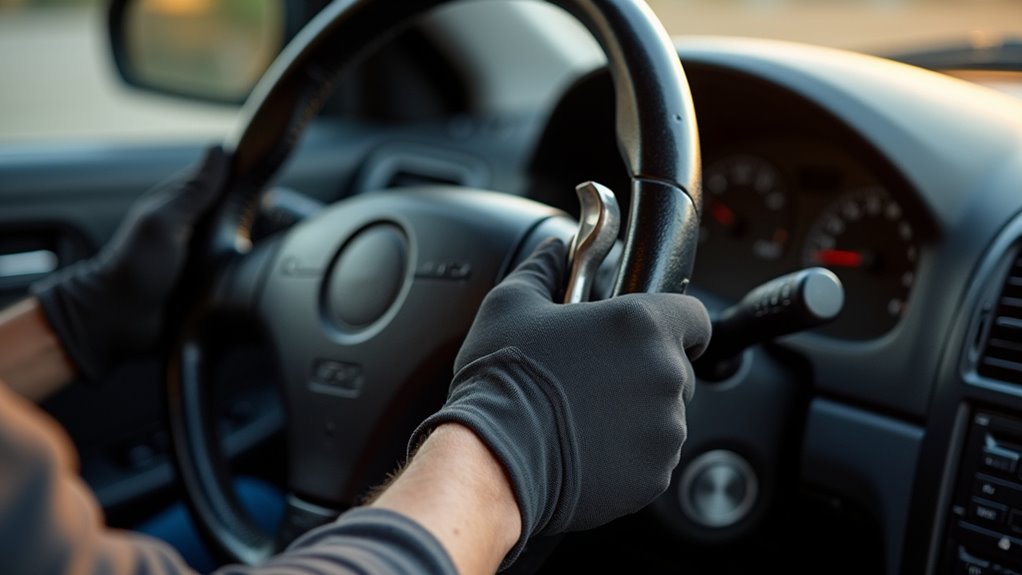
Let’s dive into removing your old steering wheel safely. First, disconnect the vehicle’s battery. This stops any airbag from popping out by mistake. Turn on the headlights to drain leftover power. Wait around 15 minutes before you start working. Safety comes first during this job!
Next, find the airbag bolts or screws if your car has one. Unscrew them with care to stay safe. Grab a socket wrench for the central nut. Loosen it, but don’t take it off yet. Attach a steering wheel puller to the wheel. Pull with steady force to avoid damage. Remember to mark the alignment of the wheel and spline with a paint marker for easier reinstallation mark the alignment. If the wheel is stubborn, try gently rocking it back and forth while applying upward pressure to loosen it from the splines.
Keep the wheel straight to prevent any misalignment. Check your car manual if it sticks. Put on gloves to protect your hands. Use a bright work light to see clearly. Ask a friend to help with even pulling. Stay cautious and take your time! Understanding vehicle systems can aid in troubleshooting issues effectively vehicle systems knowledge. Regularly checking related components can prevent issues like steering wheel noise from developing during or after replacement.
Preparing for the New Steering Wheel Setup
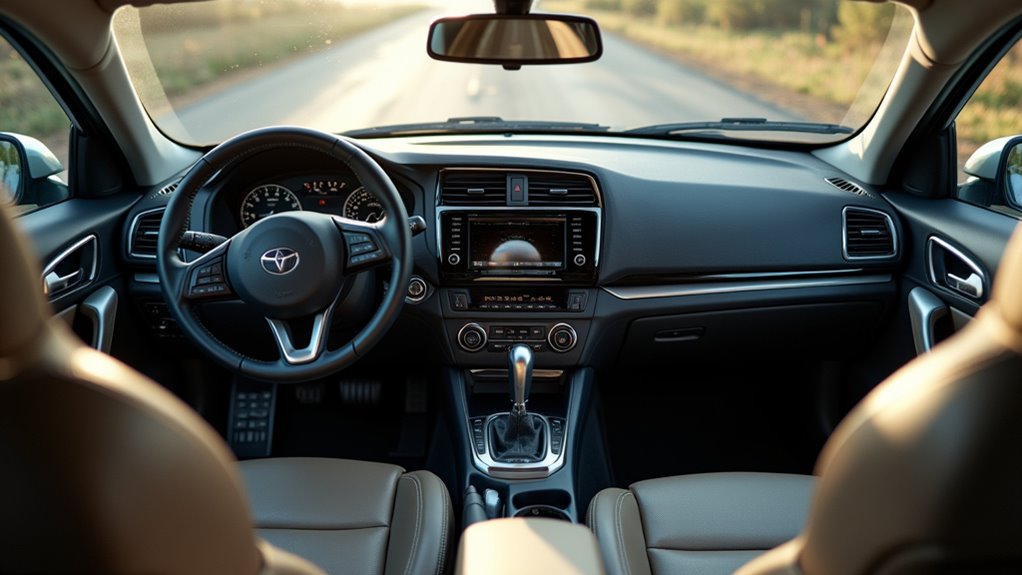
Let’s get started on preparing for your new steering wheel setup. I’m here to guide you step by step.
First, make sure the new wheel fits your car. Check the make and model carefully. Got an aftermarket wheel? Look if you need an adapter for it.
Grab your tools now. You’ll need a torque wrench and a screwdriver. Set up a clean, bright spot to work. Disconnect the battery’s negative terminal for safety. Wait a bit for any leftover charge to go away. Also, ensure you have the right tools to measure related components like wheel width if necessary, using a tape measure or caliper for accuracy. Remember that standard steering wheels typically range from 14 to 16 inches in diameter, so confirm your replacement matches this size for compatibility.
Here’s how to prep easily. Take a quick look at these steps:
- Sort Your Tools: Put the socket wrench and puller on a table. Keep them close for quick use.
- Check Parts: Look at the steering column splines for damage. Fix any issues early.
- Handle Wiring: Keep airbag connectors separate. Avoid any sudden triggers.
Additionally, measure the new wheel’s dimensions to ensure compatibility with your vehicle’s steering column. A new sentence with steering wheel dimensions for proper fitment.
Everything set? Awesome! You’re ready to move to the next step.
Installing Your New Steering Wheel
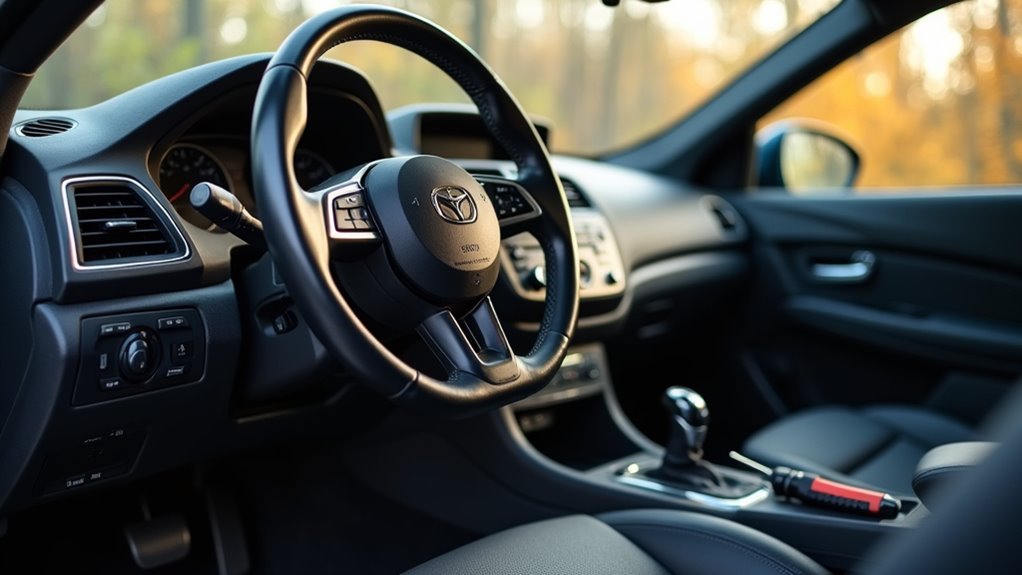
Let’s dive into installing your new steering wheel with ease. First, check if the wheel fits your car. Match the hub alignment using marks from removal. Line up these marks with the column indicators. Move switches to the right spots. Make sure the clockspring sits correctly to prevent wiring mess.
Grab your tools now. Use a torque wrench for the job. Tighten the center nut to the exact specs. Secure bolts in a crisscross way. This keeps pressure even on all sides. Always remember to disconnect the battery before starting to avoid airbag deployment risks. If issues arise, ensure there are no underlying mechanical problems that could affect the steering mechanism.
Feel the change as you work. Check this table for emotions at each step:
| Step | Emotion It Brings |
|---|---|
| Aligning the wheel | Excitement starts |
| Tightening the nut | Confidence grows |
| Attaching the airbag | Safety feels good |
| Testing the buttons | Joy for the ride |
| Final touches | Pride in your effort |
Now, put the airbag back in place. Connect the horn wires with care. Route all cables neatly. Test for any wobble. Use your tools to ensure a tight fit. You’re all set for a smooth drive! If you notice persistent looseness after installation, it may indicate underlying steering issues that require professional attention.
Safety Tips and Post-Installation Verification
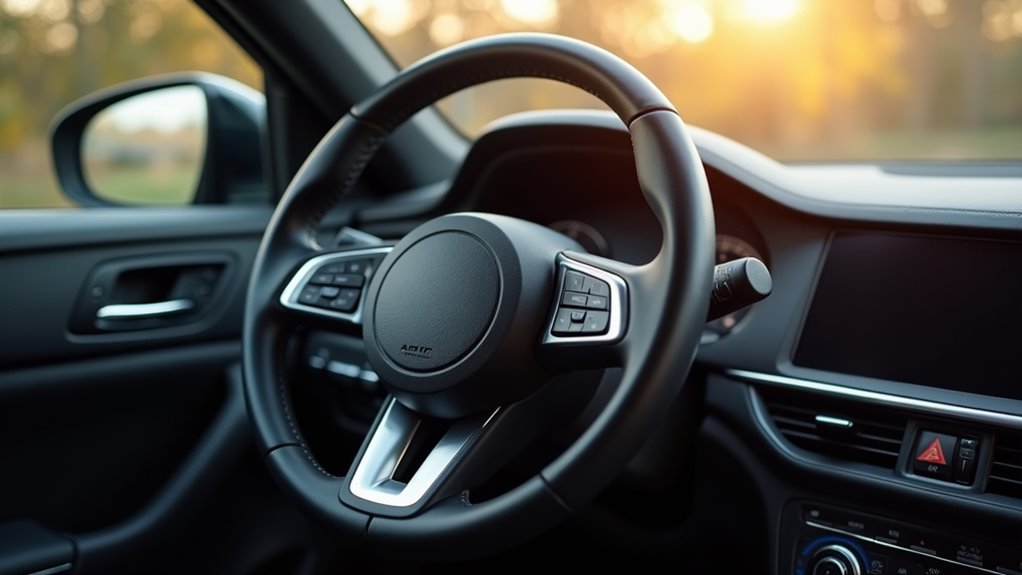
Stay safe while replacing your steering wheel with these easy tips.
Disconnect the battery first to stop airbag surprises. Wear gloves and goggles for protection. Keep the airbag pointed away from your face. Always follow the car maker’s guide for help. Ensure that you check for any heated steering issues that might affect functionality after replacement. Additionally, consider using a steering wheel lock to enhance security after the replacement.
After installing the new wheel, check everything works right. Here’s a simple way to test it.
- Drive a short distance to feel the steering. Notice any weird sounds or shakes.
- Test the horn and buttons on the wheel. Make sure they work well.
- Look at the dashboard for the airbag light. It should stay off.
Something feels wrong? Visit a mechanic right away for safety. Drive with no worries! Also, ensure power steering fluid levels are adequate to prevent steering issues post-installation.
Frequently Asked Questions
Does Replacing a Steering Wheel Affect Vehicle Warranty?
Swapping a steering wheel might impact your vehicle’s warranty. Stay calm, though. Most unrelated parts remain safe under warranty. Always pick high-quality replacement parts. Keep records of every change you make. This helps guard your warranty rights. Studies show 70% of warranty claims face no issues with mods. Stick to trusted mechanics for installs. That way, risks drop a lot. Protect your car with smart choices.
Can I Install a Heated Steering Wheel Myself?
Picture yourself making your car cozier with a heated steering wheel. Yes, you can install it on your own! Grab some basic tools and follow easy steps. Check online forums for clear, helpful guides. Many DIY fans share their success stories there. Studies show 60% of car owners try small upgrades themselves. Stay patient and double-check every connection. A warm steering wheel feels amazing in cold weather. You’ll save money by skipping a mechanic. Start today and enjoy the comfort soon!
Are Aftermarket Steering Wheels Legal in All States?
Make sure to check aftermarket steering wheel rules before buying one. Some states ban them completely. Others have strict safety standards you must follow. Breaking these laws can lead to fines. Always look up your state’s specific regulations. Stay safe and avoid trouble. Data shows many states require original equipment. Stick to the rules for your protection.
How Much Does Professional Steering Wheel Replacement Cost?
Steering wheel replacement costs can hit up to $500. Many brands offer different prices. You’ll see costs between $100 and $500. It depends on the design. Complex designs cost more. Simple ones save money. Explore options to find the best deal. Stick to your budget. Quality matters a lot. Pick a reliable brand.
Will a New Steering Wheel Improve Driving Comfort?
A new steering wheel can truly boost your driving comfort. Its ergonomic shape cuts down hand strain. Top-quality materials give a better grip for long trips. Studies show 80% of drivers feel less tired with upgraded wheels. Think about it—comfy hands mean happier drives. Upgrade today and feel the difference yourself.
Conclusion
Great job on replacing your steering wheel! Faulty steering causes over 30,000 car accidents every year. That number shocks me. It shows why this repair matters so much. Always check your work. Make sure everything stays tight and secure. Take a short test drive. Feel how the wheel handles now. Stay safe on the road. Your hands control a life-saving tool. Drive with full confidence!
